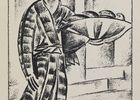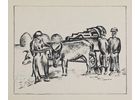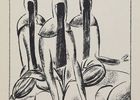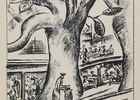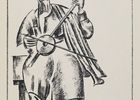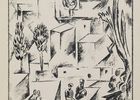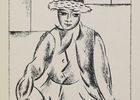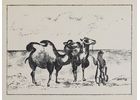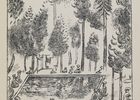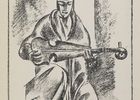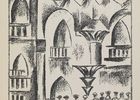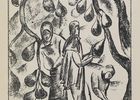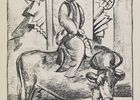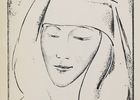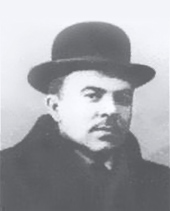
Russian
and Soviet painter, graphic artist.
Kuznetsov
was born into an icon painter’s family. He studied at the Painting and Drawing Studio
with the Saratov Society of Fine Arts Lovers under V.V. Konovalov and G.P. Salvini-Baracchi
(1891–1896). There he met Viktor Borisov-Musatov. In 1897, he entered the Moscow School of Painting, Sculpture and
Architecture where he studied under Abram Arkhipov, Konstantin Korovin, and
Valentin Serov. He collaborated with the Moscow symbolist magazines Iskusstvo [“Art”] and Zolotoye runo [“Golden Fleece”], was a member of the Mir iskusstva [“The World of Art”] association and of the Union of Russian Artists. In
1904, he was one of the organizers of the Alaya
Roza [“Scarlet Rose”] exhibition, participated in establishing the Golubaya roza [“Blue Rose”] association.
In 1906, he visited Paris, studied at private studios, presented his works at
the Russian art exhibition, and was elected a life member of the Paris Salon d’Automne (Autumn Salon). In 1911-1913, he travelled in the Volga
steppe and Middle Asia. His travels resulted in “Kirghiz Suite”, “Bukhara
Series” and other series. The artist’s brushwork discovered a new language which
was to become his main style. It was not by accident that his travel sketches “turned”
into fragments of a major monumental series.
After
the revolution, Kuznetsov participated in publishing the Put osvobozhdeniya [“The Path to Liberation”] magazine, taught, was
head of the Fine Arts Section with the People’s Commissariat of Enlightenment (1919–1924).
He continued his oriental theme, where the influence of ancient Russian
painting is felt, designed two series of lithoprints, “Turkestan” and
“Mountains of Bukhara” (1922–1923), travelled in the Crimea, Caucasus (1925–1929),
and Armenia (1930). The works created by Kuznetsov in the late 1920s-early 1930s
(including the “Portrait of sculptor A.T. Matveyev”, 1928; “Mother”, “Bridge
across the river Zanga”, 1930; “Sorting of cotton” and “Pushball”, both of 1931),
are the acme of his art.
In 1917–1937
and 1945–1948, he taught at the Higher Art and
Technical Studios/Higher Art and Technical Institute (VHUTEMAS/VHUTEIN), the Moscow Institute of Fine Arts, etc., was
organizer and chairman of the Chetyre
iskusstva [“Four Arts”] association (1924–1931).

